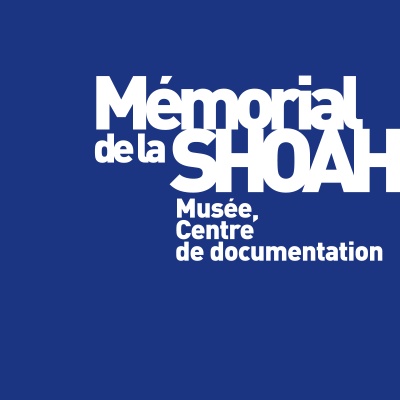98 previously unpublished photos on
the roundup of the «Billet vert»
The Shoah Memorial announces the recent acquisition of five contact sheets, representing 98 photographs. This unpublished report details precisely each stage of the first mass arrest of the Jews in Paris, on 14 May 1941, 80 years ago, at the initiative of the German authorities, by the forces of the French Police.
THE DISCOVERY IN DETAIL
The Shoah Memorial acquired 5 contact sheets, tracing the locations of the so-called "Billet vert" roundup on May 14, 1941 – from two specialized collectors. These plates acquired by the Memorial, numbered from 182 to 187 – plate 185 is missing -, represent 98 photos.
The photographer’s five films bring a reality very different from the only photos released by the collaborationist press. For the first time, the places of arrest are immortalized from several angles as well as the protagonists of the raid. Until then, dehumanized by propaganda, or even completely erased from the reports, the families of the captured are represented in the emotion of the farewell, under the eyes of the curious and neighbors.
Above all, this discovery, essential to history and the duty of remembrance, allows us to follow the path taken by these men who were rounded up, from their arrival at the Japy gymnasium, where the mousetrap was located, to their internment in the camps in Loiret.
WHAT THE PHOTOGRAPHS REVEAL
The 98 photographs, drawn in contact sheets, allow us to follow the progress of the raid in all these stages and over time.
- The first images show the protagonists of the raid inside the gym Japy in discussion. The two German and French sponsors are perfectly recognizable: Théodor Dannecker (1913-1945), representing Eichmann in France, and head of section IV J of the Gestapo, responsible for the Jewish question. Admiral François Bard (1889-1944), recently appointed prefect of the Paris police.
- The series of photos of Japy: the arrested men are parked in the bleachers upstairs. The first stage of the roundup has already taken place: the summoned Jews have entered the trap. These unpublished photos reveal the interior of Japy and the hundreds of Jewish men crowded together, as well as their companions, often their wives.
- Outside of Japy: men still arrive, carrying their summons and are received by the police officers at the entrance to the gym. They say goodbye to their family as a queue of women and children forms. They wait to give clothes back to their loved ones.
- The neighborhood is closed. The neighbors are at the windows. Families are cornered at the end of the street and waiting to hear from their loved one. The faces are anxious and the police block, then evacuate the street.
- The men of all ages, arrested, go out one by one, supervised by the police officers and enter, loaded with their packages, in buses parked just outside the entrance to the gymnasium on Japy street.
- The arrival at the Austerlitz station from the back of the station.
- In Pithiviers, a previously unseen view of the black hangar, of which no image had existed until now, during the internment of the Jews, which will then be the location for recording the Vel d'Hiv raids and deportations.
Read more
Discover the cultural program around the 80th anniversary of the roundup "greenback"
Discover some of these photos:
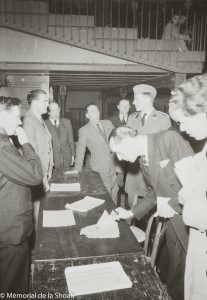
Inside the Gymnase Japy, Paris 11th, place of arrest of foreign Jews on May 14, 1941. A German delegation with the SS Theodor Dannecker, responsible for Jewish affairs in France, and French led by the police prefect François Bard, comes to inspect the device.
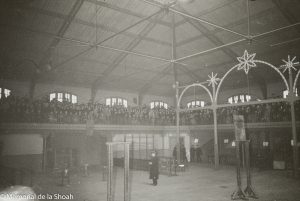
Gymnase Japy: the men arrested are parked in the bleachers upstairs. The gym center is empty. Only police officers circulate. The first stage of the roundup has already taken place: the summoned Jews have entered the trap. We discover for the first time the interior of Japy and the hundreds of Jewish men crowded together.
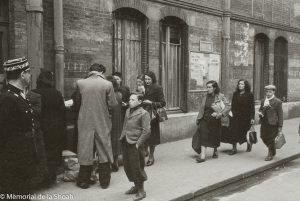
Gym Japy: some men still arrive carrying their summons and are received by the police officers who guard the entrance of the gym. Women with children arrive with suitcases and packages. The following scenes show that they queue and wait their turn to give the suitcases.
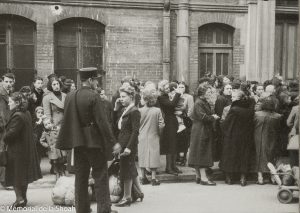
Gym Japy: some men still arrive carrying their summons and are received by the police officers who guard the entrance of the gym. Women with children arrive with suitcases and packages. The following scenes show that they queue and wait their turn to give the suitcases.
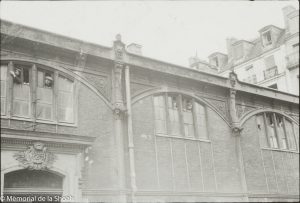
Men arrested waiting for their fate from the mousetrap that has become the Japy gymnasium
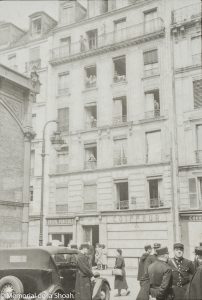
The inhabitants of the neighborhood witness the fate reserved for their now-captive neighbors and the unusual emotion that reigns around the gym Japy, Paris 11th
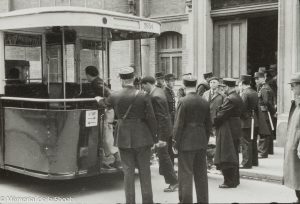
After a few hours, the men leave the premises under the guard of the police officers and must board commandeered buses for their transfer to the Austerlitz station.
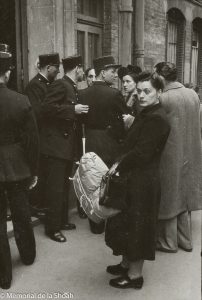
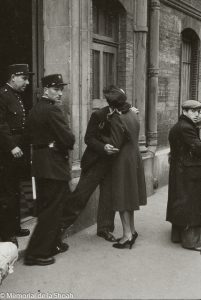
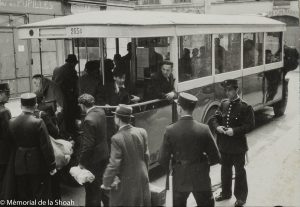
After a few hours, the men leave the premises under the guard of the police officers and must board commandeered buses for their transfer to the Austerlitz station.
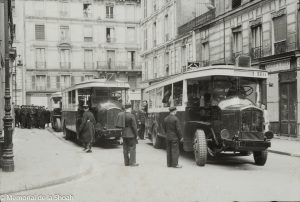
After a few hours, the men leave the premises under the guard of the police officers and must board commandeered buses for their transfer to the Austerlitz station.
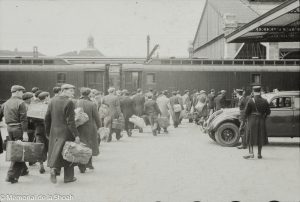
The 3,710 men arrested in Paris at the different locations of convocation are transferred to the Austerlitz station to be interned in the camps of Pithiviers and Beaune-la-Rolande. Four convoys of passenger wagons are formed, two convoys with 2140 men towards the camp of Beaune-la-Rolande and two convoys with 1570 men towards that of Pithiviers. These convoys arrive on May 14 in the afternoon.
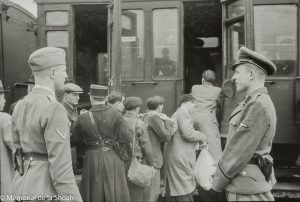
The 3,710 men arrested in Paris at the different locations of convocation are transferred to the Austerlitz station to be interned in the camps of Pithiviers and Beaune-la-Rolande. Four convoys of passenger wagons are formed, two convoys with 2140 men towards the camp of Beaune-la-Rolande and two convoys with 1570 men towards that of Pithiviers. These convoys arrive on May 14 in the afternoon.
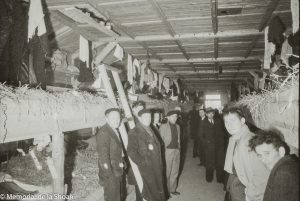
The photos are taken the day after the roundup at the camp of Pithiviers and Beaune-la Rolande. The men must settle in cold and unsanitary huts, under construction. The straw that will serve as a mattress in the bedsheds is still outside the barracks.
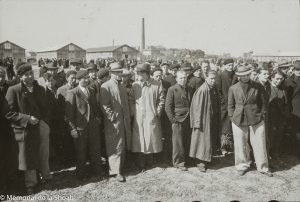
The photos are taken the day after the roundup at the camp of Pithiviers and Beaune-la Rolande. The men must settle in cold and unsanitary huts, under construction. The straw that will serve as a mattress in the bedsheds is still outside the barracks.
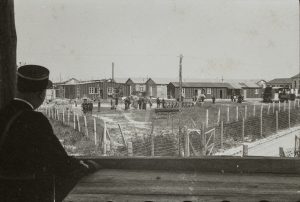
The gendarme to the left of the photo, posted in a viewpoint, watching over the camp of Beaune la Rolande, is the emblematic photo of the film Night and Fog, censored at its release in 1955.
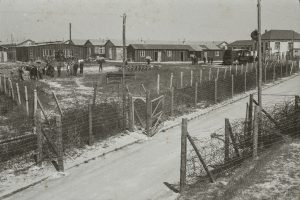
The camp of Beaune-la-Rolande and view of the city.
